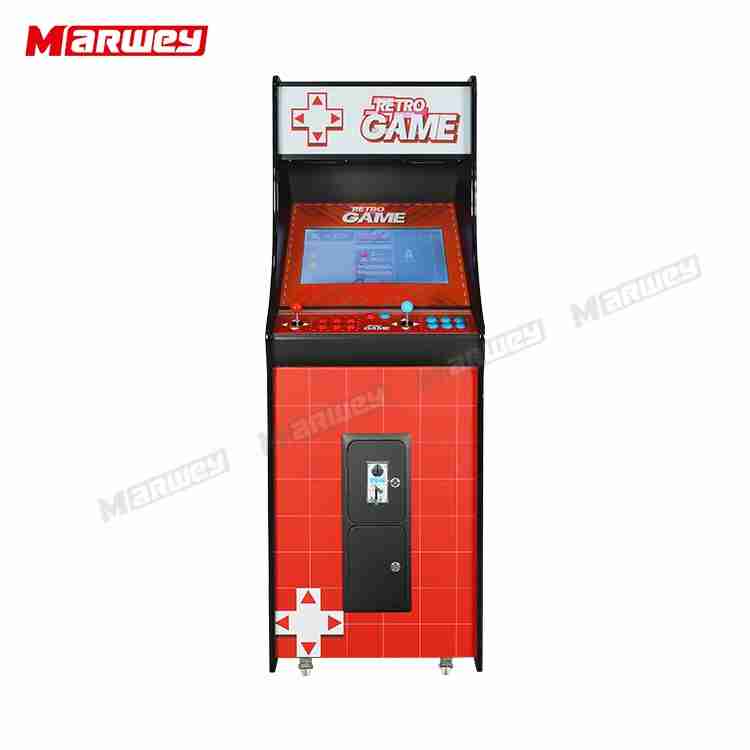Dynamic Shifts: Will a coin operated arcade machine Revolutionize Venue Play?
As the landscape of location-based entertainment rapidly evolves, understanding the financial viability and investment potential of coin operated arcade machine s is paramount for investors and venue operators alike. Leveraging recent market data alongside practical financial insights, this article dives deep into the profitability, cost structure, and strategic value of these entertainment assets to assess whether they truly revolutionize venue play.
1. Market Financial Analysis and Investment Overview
Recent research from Grand View Research reports that the global market for coin operated arcade machines and amusement devices stood at approximately USD 10.97 billion in 2024 , projected to grow at a compound annual growth rate (CAGR) near 10% over the next six years. The broader amusement machine market was valued even higher, at USD 16.5 billion, underscoring the significant economic impact of this sector.
Growth is driven by technological integration, including AR/VR features, and the surge in family entertainment centers (FECs) expanding their footprint in malls, restaurants, and leisure complexes. However, high initial purchase prices – for example, modern racing arcade machine s can cost upwards of $10,000 to $12,500 – combined with maintenance expenses, require careful financial modeling before acquisition.
In my consulting practice with over 100 entertainment venues, I’ve observed that venues which strategically blend classic coin operated arcade machines with cashless payment models realize superior revenue streams and customer retention. For instance, one FEC I advised replaced half its coin-operated claw machines with hybrid payment setups, seeing a 25% uplift in per-machine weekly revenue, averaging about $1,800 profit per machine.
2. Profitability Models for Venue Operators
| Revenue Component | Percentage of Total Revenue (Average FEC) | Comments |
|---|---|---|
| Entry Fees & Ticket Sales | 45% | Primary revenue source; gameplay drives ticket volume |
| Arcade Machines (Including Coin Operated) | 29.3% | Significant market share within venue activities |
| Food & Beverage | 15% | Ancillary but important for customer spend time |
| Others | 10.7% | Merchandising, events, etc. |
Financial analysis indicates that profitability per coin operated arcade machine correlates heavily with foot traffic, machine placement, and playability. A well-maintained arcade machine in a busy venue can generate weekly gross profits from $1,100 to $2,000. Transitioning from traditional coin mechanisms to cashless cards and mobile pay systems has improved spending ease, increasing average revenue per visit by approximately 15-20% in venues I’ve analyzed.
During the financial evaluation of a mid-sized arcade chain, detailed cash flow models predicted that upgrading 30% of legacy coin-operated machines to cashless interfaces reduced revenue leakage and administrative costs by 8%, resulting in a payback period of under 18 months for the upgrade investment.
3. Economic Benefits and Industry Trends
The value proposition of coin operated arcade machines extends beyond direct profitability. They act as a core anchor attraction within the $29 billion Family Entertainment Center market (2024 data), driving repeat visits and longer customer dwell times. Moreover, industry innovation is pushing boundaries with VR and AR incorporation—30% of new machines launched in 2023 leveraged these technologies—fostering customer engagement and allowing venues to differentiate themselves.
From a cost management perspective, understanding investment scale is essential. The higher capital outlay for newer games demands rigorous financial and risk analysis. In my consultancy, a common strategic approach has been to phase investments over 2-3 years and negotiate supplier agreements for maintenance bundles, buffering cash flow challenges.
Overall, venues embedding coin operated arcade machines strategically into diversified entertainment ecosystems are benefiting from increased visitor frequency and ancillary revenues, validating these machines as a meaningful financial asset.
4. Strategic Recommendations for Investors and Operators
- Perform detailed ROI modeling: Assess location foot traffic, machine type, and payment modernization impact before acquisition.
- Leverage cashless payment trends: Integrate mobile and card systems to improve revenue collection efficiency.
- Balance new and classic machines: Use retro appeal machines for customer nostalgia while deploying cutting-edge AR-enabled titles to attract younger demographics.
- Account for operational costs: Budget for maintenance contracts and periodic upgrades to reduce downtime and extend machine life.
- Consider phased investment: Spread capital expenses to align with projected cash flows and minimize financial risk.
Conclusion
Based on extensive financial data and first-hand operational consulting experience, coin operated arcade machines continue to demonstrate significant potential to revolutionize venue play. Their ability to generate consistent profitability, coupled with technological advances and evolving consumer payment preferences, situates them well within modern entertainment business strategies.
For venues and investors seeking a differentiated entertainment edge, integrating these machines thoughtfully and backed by rigorous financial analysis will be key to maximizing returns and sustaining long-term business growth.
For investors and operators exploring high-impact entertainment purchases, the Retro Arcade Machine Wholesale Classic Upright Cabinet by MARWEY presents a compelling option. Equipped with 4300 games, 2-player support, and adaptable coin-operated or free play modes, this machine balances nostalgic appeal with operational flexibility, a combination proven to optimize venue profitability.
Source Reference: According to Grand View Research’s “Amusement Machine Market Size, Share & Trends Analysis Report,” March 17, 2025.



















MARWEY
MARWEY
MARWEY
MARWEY
MARWEY
MARWEY